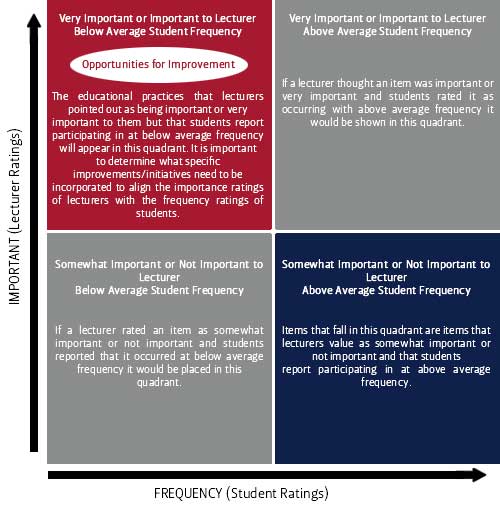Introduction
The Quadrant Analysis compares students’ participation in educationally purposeful activities to the lecturer’s perception of how important such activities are to student success in a particular module.
The process of interpreting CLASSE results is also illustrated in this video.
In the Quadrant Analysis Report, the lecturer will be able to measure how their assigned importance ratings of a specific item aligns with the frequency at which the students report engaging in that particular item.
Step 1: What quadrant says what? This will show the lecturer where there might be points of disconnect in engagement behaviours. This can be seen as 'opportunities for improvement.' The quadrant analysis also shows areas where the lecturer and the students are in harmony with each other. The items located in the upper left quadrant indicates areas where the lecturer can employ activities to improve students’ participation in the educational effective practices that are important for success in the particular module.
The table under Step 2: Click on a specific question for activities, contains shortened versions of all the questions included in the CLASSE survey. A lecturer can click on an item that they want to improve and obtain activities to address that specific area in the module.
Step 1: What quadrant says what?

Step 2: Click on a specific question for activities.